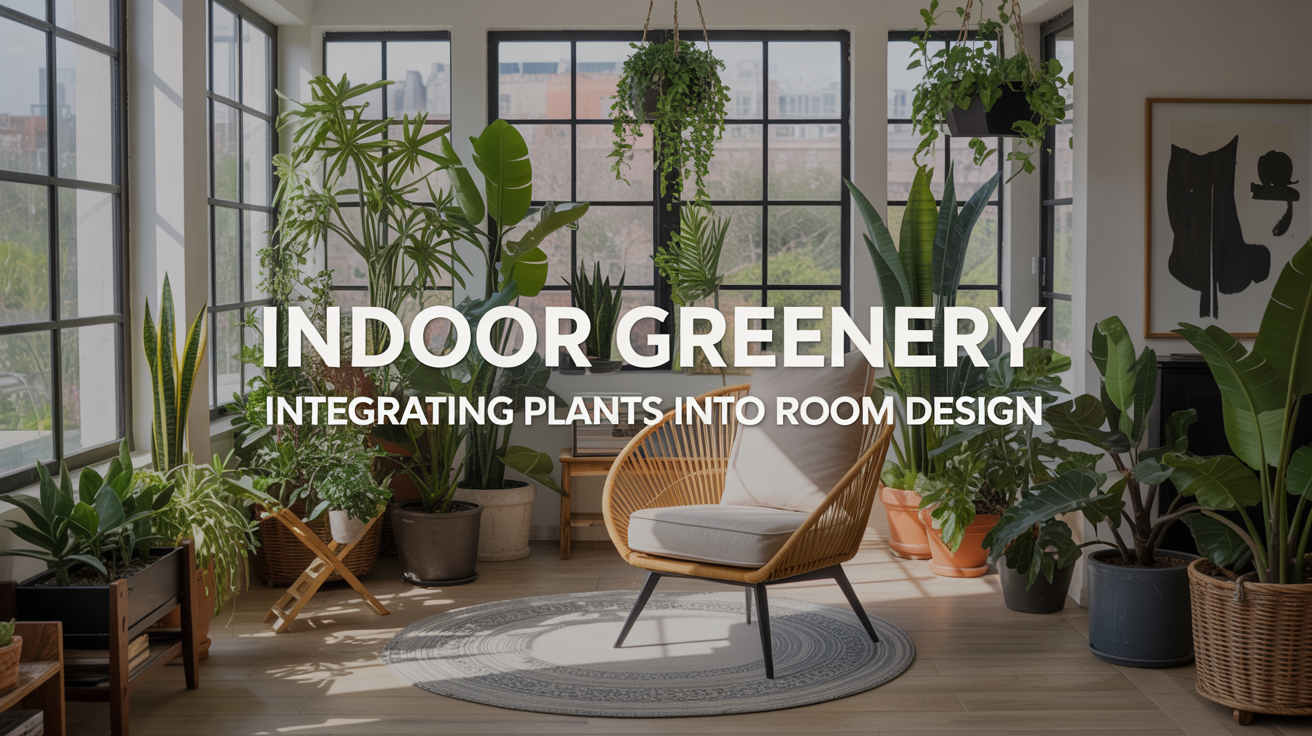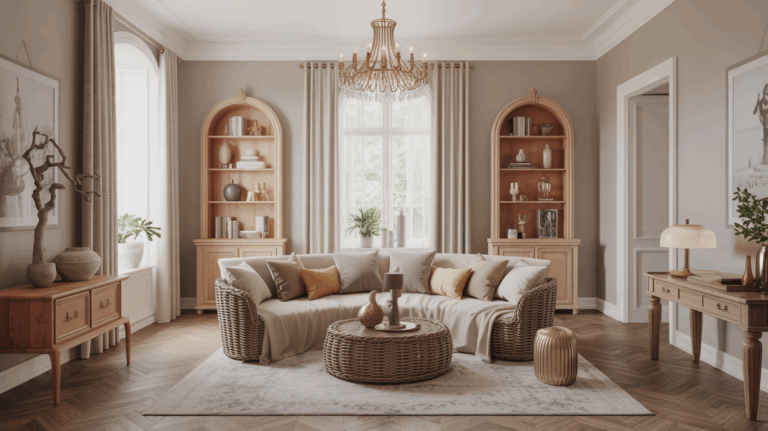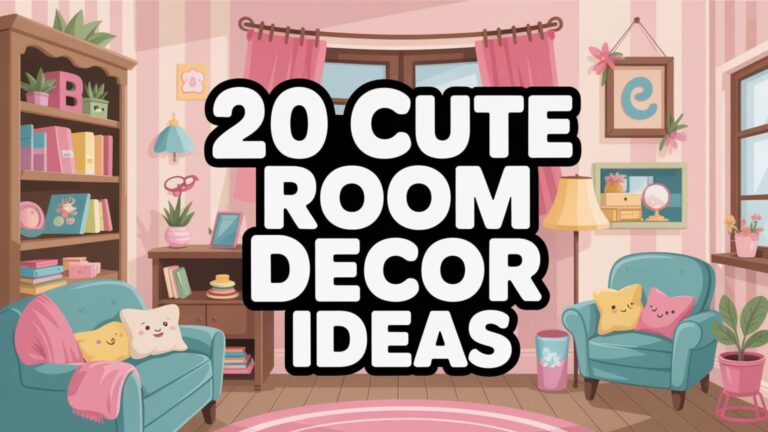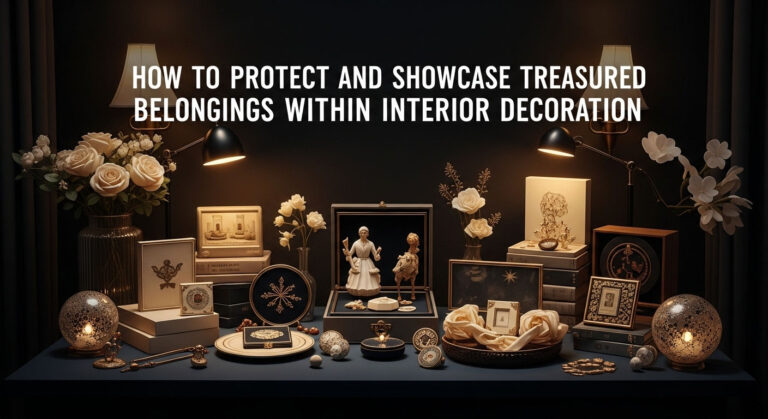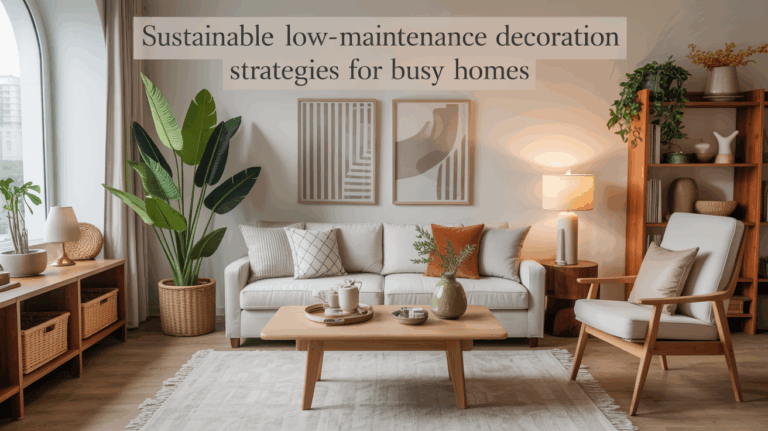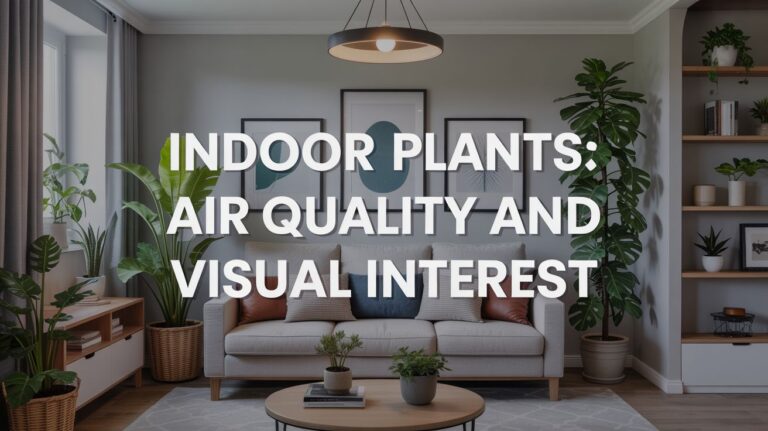Exploring Indoor Greenery: Integrating Plants Into Room Design for Depth
I have been, or can be if you click on a link and make a purchase, compensated via a cash payment, gift, or something else of value for writing this post. As an Amazon Associate, I earn from qualifying purchases. Please read my full Affiliate Disclosure for more information.
You’ll transform spaces by pairing light, airflow, and texture with thoughtfully placed greenery, turning rooms into layered portraits of depth and calm. Start with the foundations: map sun exposure, surface capacity, and drainage to place plants where they thrive. Layer foliage to create rhythm—tall stems near windows, mid-height along corridors, lows by seating. Let silhouettes guide movement, using contrast and pruning to carve focal points. If you keep exploring, you’ll uncover how to deepen this design sense further.
Key Takeaways
- Map sun exposure and airflow to place plants in niches that add depth without clutter.
- Use varying plant scales (tall, mid, low) to create vertical rhythm along windows, corridors, and seating areas.
- Mix leaf textures and colors, coordinating greens with materials to reinforce spatial depth.
- Sculpt depth with form and light, using focal plant groupings at thresholds and view lines.
- Integrate maintenance routines and appropriate containers to sustain visual harmony and ease of care.
The Foundations: Assessing Light, Space, and Plant Choices
Evaluating light, space, and plant choices starts with a clear map of the room: where sun hits, how the floor plan guides movement, and which surfaces can host greenery without crowding. You’ll assess light quality, duration, and seasonal shifts, then pair plants with niches that respect airflow and readability. Soil health matters for longevity, so choose substrates that drain well yet retain moisture, and monitor compaction. For watering techniques, favor consistent routines, detect root stress, and avoid overwatering via drainage indicators. Your selections prioritize accessibility, scale, and material texture, helping you design a calm, resilient green presence that supports sustainable growth.
Layering With Foliage: Creating Depth and Texture Across Rooms
Layering with foliage creates depth and rhythm by choreographing plant scale, leaf texture, and placement across sightlines and surfaces. You design quiet progressions: tall stems near windows, mid-height clusters along corridors, low groundcovers by seating. This layering builds spatial reading—where color, texture, and form guide movement without shouting. Emphasize variety contrast to prevent monotony: mix broad, glossy leaves with delicate, matte ones, large-leaf specimens with fine ferns. Seek color harmony across rooms, aligning greens, variegations, and seasonal accents so transitions feel cohesive. Let materials—wood, stone, fabric—echo foliage tones, reinforcing depth while maintaining clarity and calm across everyday spaces.
Functional Greenery: Movement, Shape, and Focal Points
Functional greenery does more than decorate; it guides movement, defines shape, and creates intentional focal points. You observe how a plant’s silhouette and reach draw you through a space, shaping your steps and sightlines. Movement arises from vertical and horizontal contrasts, from staggered heights, and from responsive pruning that redirects attention. Shape is sculpted by form, container, and light, turning corners into deliberate pauses. Focal points emerge where air circulation patterns and plant placement align to emphasize a threshold or view. Materials—pots, stands, substrates—ground the composition, ensuring calm, legible relationships between greenery, architecture, and human flow.
Style Synergy: Matching Plant Types to Design Aesthetics
Style synergy emerges when plant types align with design aesthetics, guiding how a room feels, moves, and breathes. You observe how form, texture, and line harmonize with architectural cues, letting plant choices reinforce the space’s language. In practice, you match leaf structure and growth habit to a scene’s tempo and silhouette, creating coherent visual gravity. Consider plant color palettes to underscore mood, and container styles to read as sculpture or infrastructure. This approach preserves material honesty, avoids clutter, and clarifies hierarchy. When executed with intention, greenery amplifies depth without overpowering, becoming a subtle, integrated design system.
Maintenance Mindset: Caring for Indoor Plants Within Daily Life
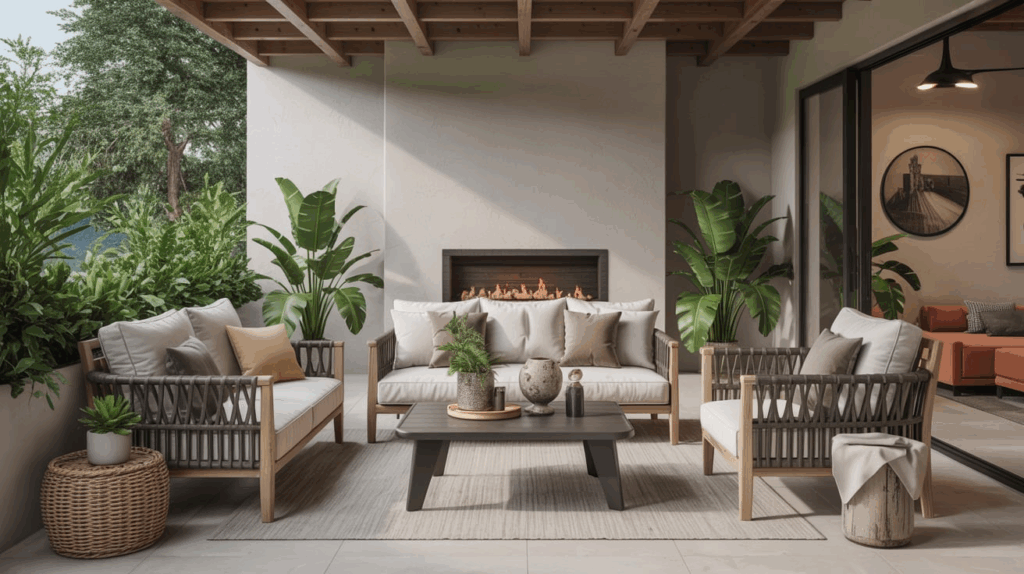
Maintenance isn’t just a task list—it’s a built-in rhythm that keeps plants legible in daily life, translating care into consistent presence. You weave maintenance into routine spaces, so greenery remains a calm, readable element rather than a sporadic feature. Watering routines become quiet anchors, aligning with lighting shifts and room occupancy without drama. Materials choice—pots, trays, stands—helps you read plant needs through texture and height, not guesswork. Pest management stays preventive, integrated with clean surfaces and airflow, reducing disruption. This mindset clarifies how care fits your schedule, turning plant care into a stable design rhythm that supports depth and spatial harmony.
Conclusion
You’ll finish with a space that breathes. Light becomes the script for each plant’s presence, guiding placement like furniture’s quiet repetition. Texture emerges through layered foliage, casting subtle shadows that map the room’s rhythm. Materials—pots, shelves, planters—shape the narrative, while movement and focal points choreograph attention without crowding it. Maintenance pivots to daily ease, not burden. In this mindful choreography, greenery extends the room’s depth, aligning function, form, and atmosphere into one coherent, living design.
